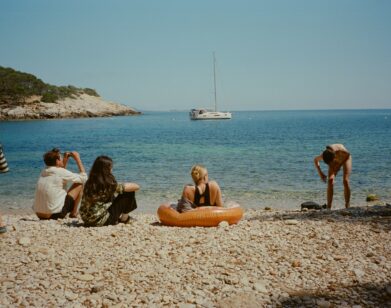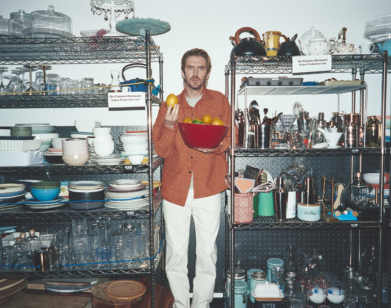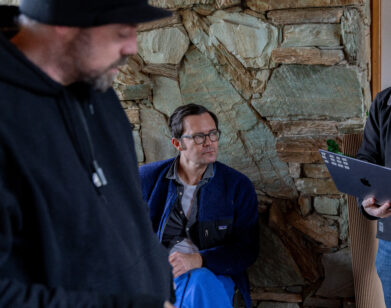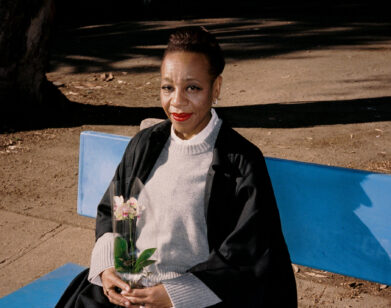Three Movies That Prove the Year inCinema Still Has Something to Offer
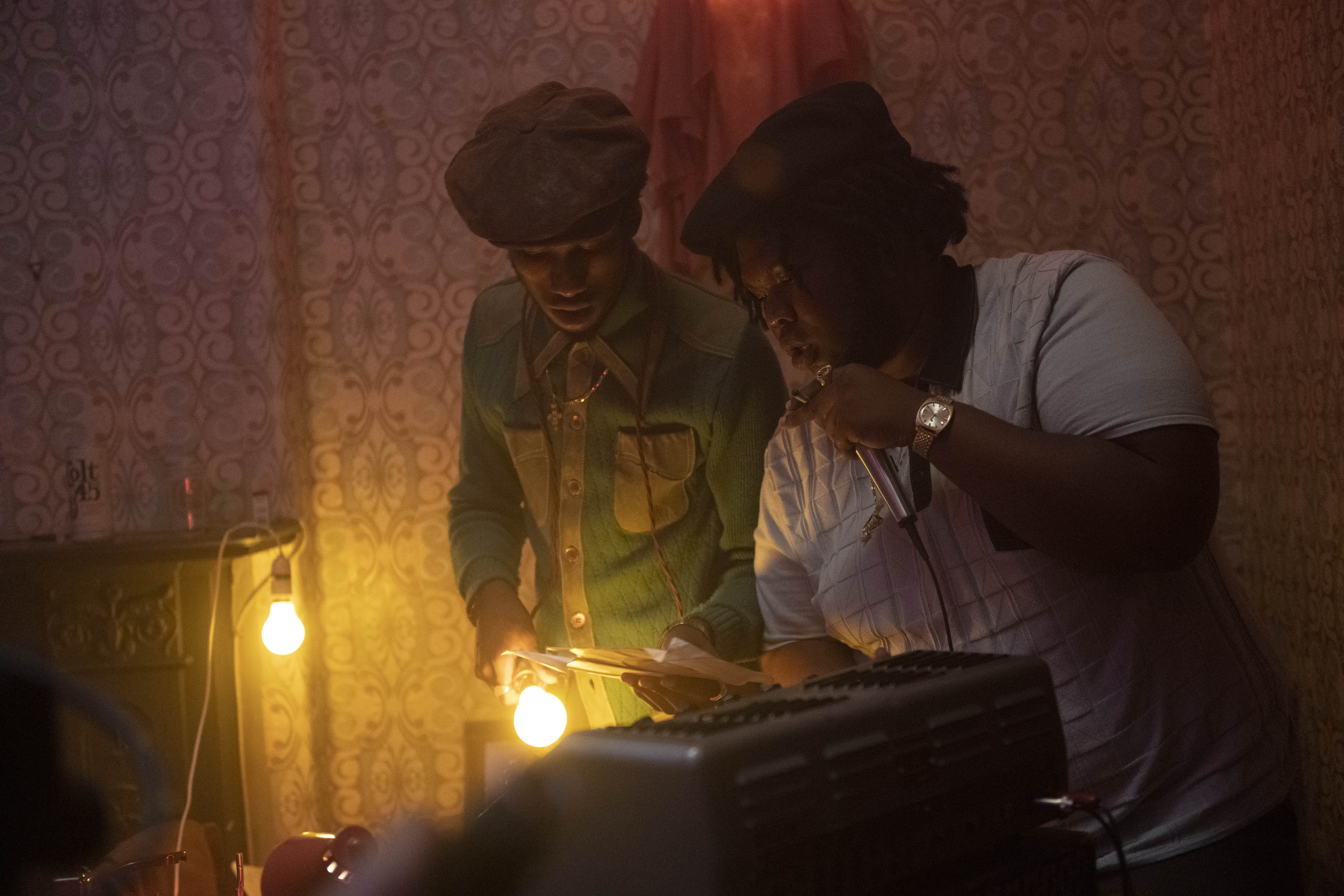
This is the first year I’ve been away from the New York Film Festival so the fact that it’s virtual is incredibly convenient. But between Toronto and New York, which overlapped on the calendar this year and also in terms of some of their respective lineups, it feels like that mythic adage has come true: it’s a terrible year for cinema. Maybe the worst! No one is going to come right out and say it, which is odd because usually everybody can’t say it enough. If you were to listen to pundits and critics, cinema has been a dying art form for years. Some say prestige television is the future. Others point to virtual reality and gaming. It feels like clockwork that every spring—annually the worst season for decent film releases— that Bret Easton Ellis, my favorite film critic, declares that movies are over. Maybe this year, one in which movies have materially been cancelled, nobody has the heart to complain because we just want things to go back to the way they were.
But my pragmatism is getting the better of me. Earlier this month it was announced that Cineworld is closing all of its Regal Cinemas in the U.S., threatening over 40,000 jobs. Big fall releases, like the Bond film No Time To Die and Wes Anderson’s The French Dispatch, have been pushed to next spring. On the film festival front, it has meant that most films with adventure, humor, optimism, or indulgent aesthetic value have flown the coop, and what we’re left with are films about social justice, war, disease, poverty, and death, with few exceptions. At least, that was how it looked until now.
I screened Steve McQueen’s hyphy Lovers Rock on the late side. I’ve come to enjoy being behind the party, because I find that we live in an age of uncanny consensus among film writers. Reactions to Lovers Rock have been rhapsodic, so I was eager to see what the fuss was about. At the start of the film, we meander through Ladbroke Grove, West London, sometime in the 1980s and into a bustling family home. Overstylized to a disorienting fault, it’s at first taxing to square the meticulous production and pristine costume design with the vivid, vérité handheld style of cinematography (the film was shot by Shabier Kirchner, who also shot Skate Kitchen), halting the suspension of disbelief in its tracks. It all feels incredibly artificial and stagey—corny, even—until we arrive at the central event: a house party charging 50 pence a head, complete with a makeshift soundsystem, a kitchen-turned-refreshment stand, multiroom crash pad zones, and a back garden for sporadic romantic (or less romantic) interludes.
Blessedly, it’s an act of girl-on-girl pettiness that strikes the first emotional chord, drawing us into this reality fully and from there McQueen creates what can best be described as a euphoric love letter to West London black culture (particularly the genre of reggae known as “Lovers Rock” for its romantic characteristics) and DIY nightlife. Running little over an hour and packaged as part of a series of films for BBC called Small Axe, McQueen experiments with form ingeniously: the condensed running time mirroring the compressed hallucinatory recollections of a delirious night out. We follow a young woman named Martha (the magnetic Amarah-Jae St. Aubyn) and her friend Patty (Shaniqua Okwok) through the night in what feels like real time, witnessing all manner of flirtations, rejections, and myriad parasocial interactions with men—namely Franklyn and Bammy (Micheal Ward and Daniel Francis-Swaby, total stars).
Story is an esoteric concept in what is largely an experiential mood piece, anchored in a surprising and masterful DJ set that includes music from Janet Kay, Sister Sledge, and the Revolutionaries. In one particularly moving turn, the entire party is taken captive by Carl Douglas’s “Kung Fu Fighting,” an ingenious injection of pop into the sonic tapestry that immediately taps into the psyche of any viewer of a certain age and bridges a connection between spectator and screen. Sublimely choreographed, Kirchner’s lens moves through the crowd like a participant, and the dancing builds to an elongated meridian of abandon that feels spontaneous and real—you almost get the feeling McQueen and his crew created as real a facsimile of an ’80s Blues party (as they were called) and just let the night take them, with cameras rolling. It’s a testament to the dedication to detail and craft on the part of the crew, particularly choreographer Coral Messam. But it’s ultimately the engaging performances that give emotion to the spectacle, resulting in one of the most affecting depictions of fledgling romance in years. Lovers Rock can’t possibly contend with the music culture films that might have served as inspirations—I thought of Jimmy Cliff’s The Harder They Come, Mark Leckey’s Fiorucci Made Me Hardcore, D.A. Pennebaker’s Monterey Pop, and Janet Jackson’s Grammy-winning “Got ‘Til It’s Gone” video by Mark Romanek at different points—but it also certainly doesn’t have to. A steamy, pulsating snapshot of a drama, Lovers Rock stands completely on its own.
Gianfranco Rosi’s Notturno is the follow-up to the game-changing Fire At Sea (2016). In that documentary, Rosi transcended categorization by applying narrative feature techniques to filming the real story of a boy’s coming of age on the island of Lampedusa, as precarious migrant boats washed upon the shores filled with refugees. It was a lyrical and somber stare into the heart of the migrant crisis that disoriented the senses—at times it was difficult to tell what was spontaneous and what was staged.
With Notturno, Rosi creates and even vaguer, more elliptical artifact of observations from the borders of Iraq, Kurdistan, Syria, and Lebanon. It’s unmooring in its seemingly randomized edit, rarely allowing us to know the locations or circumstances of what we’re seeing, but the film provides an impressionistic, almost National Geographic-type of immersion into the bleak landscapes of a region defined by destruction. A photographic wonder, Notturno‘s strengths are aesthetic: an extended take of a young man perched in full daffodil-yellow rubberwear on the nose of a motorboat speeding down a river at night is profoundly striking. The exteriors of convalescent hospitals and community centers are as haunting and arresting as any William Eggleston photograph. In fact, the beauty of the compositions creates an unsettling feeling, as though Rosi’s goal is less to inform us of the destitution of war than to adopt it in order to anoint a pretext of gravitas to his filmmaking and in doing so, indulge in it. The somnambulant quality of the direction has a numbing effect, and when the rapid cacophony of gunfire faintly enters into the experience you hardly even register it as an alarm.
For those seeking uplift this fall, you can hardly do any better than Spike Lee’s latest concert doc, the fantastic American Utopia, which captures David Byrne’s Broadway experience from its home at the Hudson Theater. Byrne is in classic, synthesized form, replete with corporate, educational signifiers, boxy gray suits, bare feet, and an astonishingly simple and monolithic stage design. Byrne has always been a master of scale, and he applies it to each element of his live event with a philosopher’s touch. Through his lighting, choreography, stage design, banter, and intuitive curation of his own best songs, Byrne succeeds in striking a peculiar balance that feels both intimate and expansive. His lyrics, after all, are nothing if not universal.
Joined by 11 musicians who move freely with their instruments rigged about their torsos, Byrne crafts a spellbinding lesson in expectations, time, distance, routine, community, human behavior, logic and irony that feels like a culmination of his life’s work, albeit in an economic, no-nonsense package. Lee, who’s carved out an imposing corner in the event documentary space (his work includes John Leguizamo’s Freak, The Original Kings of Comedy, The Concert for New York City after the September 11th attacks, and Mike Tyson: Undisputed Truth among many others) opts for slickness and ingenuity. His camera explores every facet of the staging, whether close-up amid the silver chains that make up the walls of the set, from overhead where the musicians’ formations can be geometrically appreciated, and in the audience, where he immerses himself into the real-world experience of witnessing this historic music event. It’s perfectly executed, but the real star is the music. Even if one hasn’t always kept up with the Talking Head, especially into his solo years, to be reminded of his songwriting contributions is surprisingly emotional. As the camera floats beside Byrne on stage, to see him illuminated in a pitch-black void, hurtling himself through the darkness in a state of mock confusion to the opening chimes of “Once in a Lifetime” feels like an indelible addition to the visual rock and roll canon. And to see Mr. Byrne, at this stage of his career, operating in such fine form, creates an unusual feeling. I think it’s hope.

